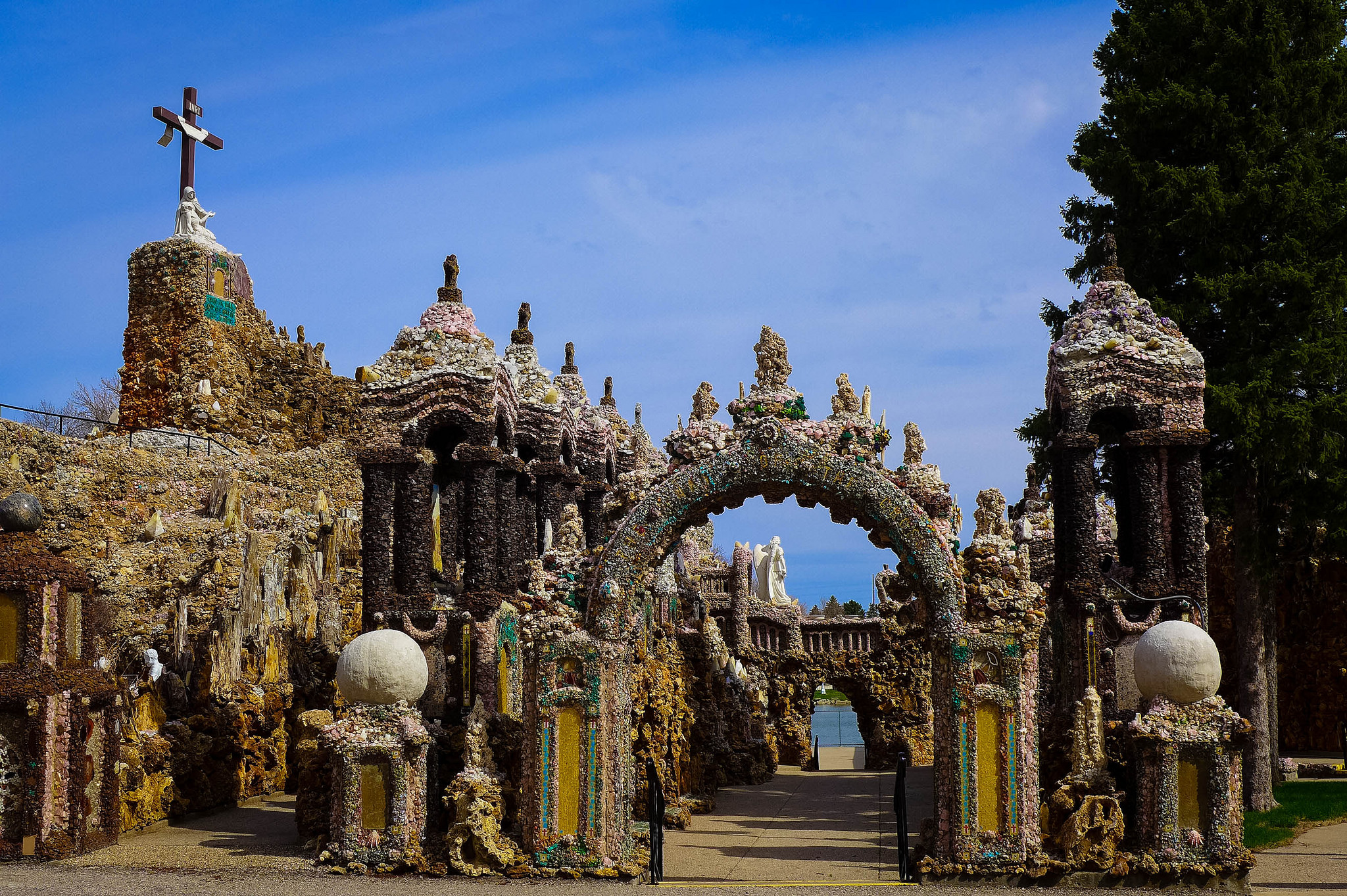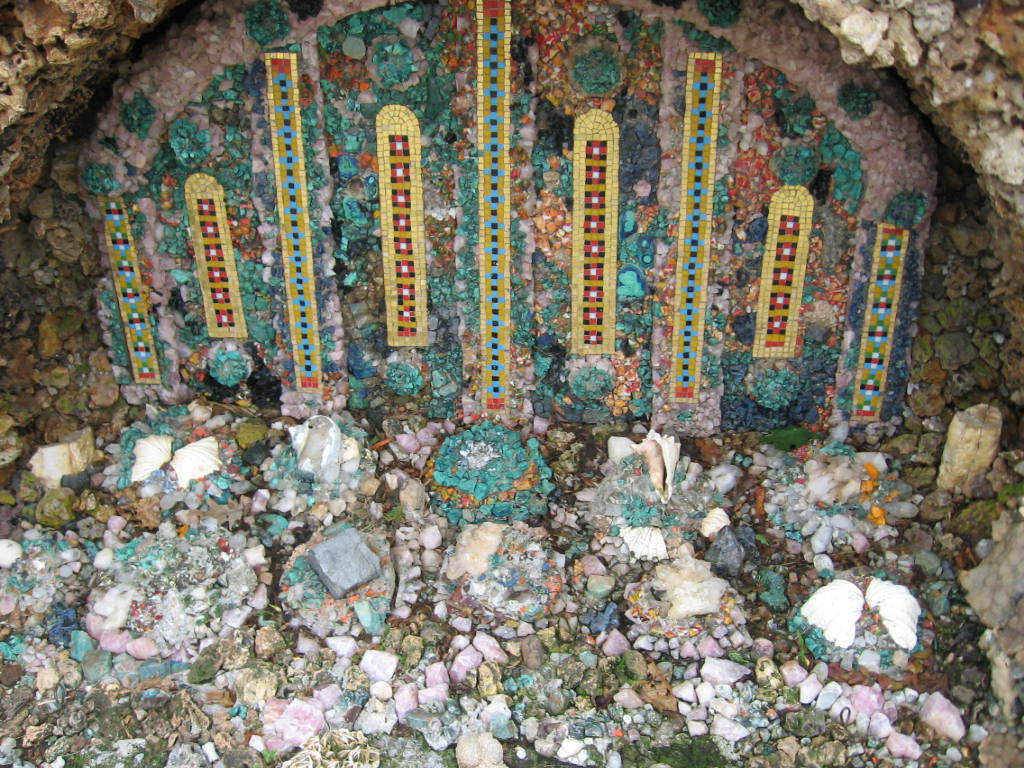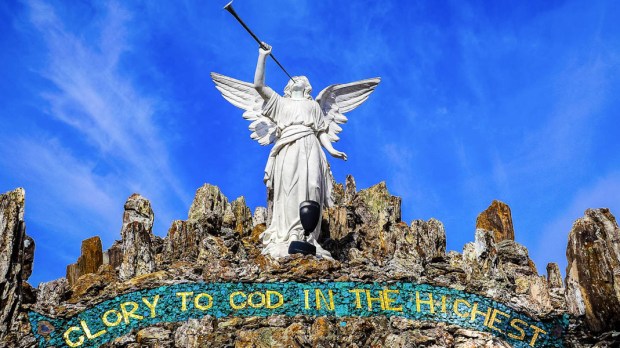Lenten Campaign 2025
This content is free of charge, as are all our articles.
Support us with a donation that is tax-deductible and enable us to continue to reach millions of readers.
Residents of West Bend, Iowa, call it “The Eighth Wonder of the World.” Towering as high as 40 feet, the Shrine of the Grotto of the Redemption fills a city block with one of the world’s most unusual and spectacular shrines to the Virgin Mary.

Constructed out of minerals, fossils, shells and what is said to be the largest collection of precious stones and gems in one location, the shrine draws 100,000 visitors a year.
The grotto was the inspiration of Paul Matthias Dobberstein, a young seminarian who had recently emigrated from Germany to the United States. While studying for the priesthood, young Father Dobberstein contracted pneumonia and became critically ill. He prayed to the Blessed Virgin Mary to intercede for him and return him to good health. In return, he promised to build a shrine in her honor.
After he recovered and was ordained in 1897, and after having been named pastor of a West Bend Catholic church the following year, Dobberstein set out to make good on his promise. For over a decade he collected rocks and precious stones to construct the shrine to Our Lady.
As Iowa had no natural deposits precious stones, he traveled hundred of miles to places such as Hot Springs, Arkansas, and the Black Hills of South Dakota to collect stones. The towers, arches, staircases and alcoves are all encrusted with gems, fossils, coral, and petrified wood.

Construction began in 1912, and Father Dobberstein kept adding to his creation for 42 years, working until the day of his death in 1954. According to the Shrine’s website, the purpose of the grotto was to “to tell in silent stone made spiritually eloquent, the story of man’s fall and his redemption by Christ, the savior of the world.”
A visitor to the grotto is presented with scenes depicting the Holy Trinity, the Garden of Eden, the Ten Commandments, the stable in Bethlehem, Jesus’ boyhood home, the Sermon on the Mount, the Garden of Gethsemane, and the Stations of the Cross. A virtual tour with 360-degree photos is available at the Shrine’s website.
On August 1, 2015, the grotto was named a diocesan shrine by R. Walker Nickless, Bishop of Sioux City.

